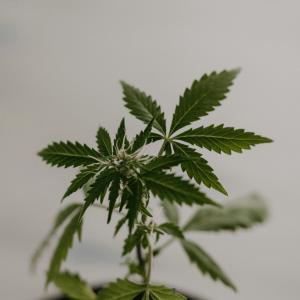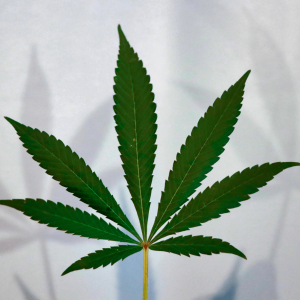Hemp has been a staple in the cannabis industry for centuries, valued not just for its psychoactive cousin, marijuana, but for its versatility and wide range of uses. Understanding how to identify hemp plant is essential, especially as they share the same family with other cannabis varieties.
Unlike marijuana, hemp contains very low levels of THC, the compound responsible for the “high,” making it an excellent choice for various products. From construction materials to textiles, paper, and even health food, hemp is an eco-friendly alternative that is gaining traction.
However, distinguishing hemp from other cannabis strains is crucial to avoid legal pitfalls and ensure proper cultivation. This blog serves as your comprehensive guide to identifying hemp plants, offering insights into their unique features, growth patterns, and practical tips to help you confidently differentiate them from their cannabis counterparts.
Understanding Hemp
Hemp is a variety of the Cannabis sativa plant that has been cultivated for thousands of years, primarily valued for its industrial or culinary uses (think hemp seeds and hemp seed milk) rather than its psychoactive properties.
Historically, hemp fibers were used to produce ropes, textiles, and paper, with records dating back to ancient China around 2737 BC. As societies progressed, the versatility of hemp continued to shine—it’s even been used for building materials and biofuels.
Legally, the status of hemp varies significantly across regions; in the United States, the 2018 Farm Bill distinguished hemp with a THC content of 0.3% or less as legal, differentiating it from marijuana, which typically contains much higher levels of THC. This legal classification has allowed hemp cultivation to flourish, leading to a boom in products ranging from CBD oils to sustainable clothing.
In contrast, marijuana is primarily sought after for its intoxicating effects, thanks to high THC levels. While both plants stem from the same family, their applications diverge greatly. Hemp is often hailed for its eco-friendliness and practicality, serving as a key player in various industries, while marijuana remains popular for recreational and medicinal use.
Understanding these distinctions is not just important for legal purposes but also enriches our appreciation of hemp’s many benefits in a world increasingly focused on sustainable solutions.

Visual Characteristics of Hemp
Identifying hemp plants comes down to their unique visual characteristics, which can help you differentiate industrial hemp and marijuana plants. Let’s dive into the key attributes that define hemp.
Leaf Structure
Hemp leaves are quite distinctive, usually featuring a long and slender shape with jagged edges, similar to fingers splayed open. These leaves can grow quite large, often measuring between 4 to 12 inches in length.
Color is another giveaway; hemp leaves generally radiate a rich green hue, though you might spot lighter shades depending on the specific strain and growing conditions.
The placement of the leaves is also telling; you’ll find them arranged in a way that allows sunlight to reach each leaf effectively, optimizing photosynthesis as the plant grows.
Image: a rich green cannabis leaf in front of a plant
Stem Features
When it comes to the stem, hemp plants typically stand tall and sturdy, reaching heights up to 15 feet or more under ideal conditions. Their stems can be relatively thick, showcasing a robust structure that supports the plant’s upward growth.
As you compare stems, you’ll notice that hemp has a rough, textured surface, which differs from the smoother stems of many marijuana plants. This texture not only helps the plant cope with wind but also contributes to its strength when used for various industrial applications.
Flowering Characteristics
Hemp plants produce flowers that vary based on sex. Male plants have small, greenish clusters of flowers that grow in spike-like formations, while female plants produce larger, more noticeable buds that are typically covered in resin, especially as they mature.
The flowering stage usually occurs a few weeks into the growing season, generally around late summer to early autumn. This timeframe will depend on the climate and strain, but recognizing the difference between male and female flowering structures is crucial for effective cannabis cultivation.
By keeping an eye on these visual features, you’ll be well-equipped to spot hemp wherever it grows, ensuring you make the right distinctions in this niche field.

Identifying Hemp Through Growth Habits
When it comes to identifying hemp plants, their growth habits can provide valuable clues. Understanding how hemp grows not only helps in recognizing it but also informs proper cultivation techniques to ensure a healthy yield.
Plant Height and Density
Hemp plants can really reach for the sky! Typically, you’ll find them standing between 6 to 15 feet tall, depending on the specific variety and growing conditions. Dense stands of hemp can create a striking sight, where plants are closely packed together, competing for sunlight and space.
In contrast, solitary hemp plants might appear more elongated, stretching taller as they seek sunlight. This difference in growth patterns can be attributed to their surroundings—while dense groups may inhibit lateral growth, they often result in thicker, more robust stalks that can produce significant biomass.
Root System Characteristics
Another important aspect of hemp’s growth habits is its root system. Hemp plants develop deep taproots that can reach impressive depths, allowing them to access moisture and nutrients from deeper soil layers. This adaptability makes hemp particularly resilient across various soil conditions, whether it’s sandy, loamy, or clay-heavy soils.
Additionally, the extensive root system can improve soil health by preventing erosion and promoting biodiversity, as it enhances the structure of the soil.
By recognizing these growth habits—height, density, and root characteristics—you’ll be well on your way to confidently identifying hemp plants in their natural habitat or in a cultivation setting.
Distinguishing Hemp by Aroma and Texture
Scent Profile
When it comes to identifying hemp, the aroma plays a surprisingly big role. Hemp boasts a fresh, earthy smell, reminiscent of a clean, green garden after a rain. This natural scent is often lighter and less pungent than that of marijuana, which typically exudes a strong, skunky aroma that can be quite overwhelming.
While both plants share some similar notes due to their genetic heritage, the fragrant differences can help distinguish them. If you catch a whiff of a subtle, herbal scent with hints of grass and woodiness, you’re most likely dealing with hemp.
Plant Texture
Now, let’s talk about the texture. When you touch hemp leaves, you’ll notice they have a slightly rough feel—almost like a thick piece of paper or the texture of a soft olive leaf. This contrasts with the often velvety or sticky texture found on marijuana leaves, which can feel quite resinous thanks to their higher trichome production.
Moving to the hemp stalk, hemp stems are generally sturdy and provide a robust, fibrous feel, highlighting their strength and industrial uses. On the other hand, cannabis plant stems tend to be smoother and can feel a bit more delicate.
Overall, the tactile differences between these plants can be just as telling as their visual and aromatic characteristics, helping you confidently identify hemp whenever you’re out and about.
Practical Tips for Identification
When it comes to identifying hemp, having the right resources at your disposal can make all the difference. Field guides specifically tailored to hemp and cannabis plants are a great starting point. These guides provide detailed visuals and descriptions that can aid in distinguishing between hemp and its marijuana counterparts.
Additionally, don’t underestimate the value of consulting professionals or local experts; their knowledge can unlock new information, helping you navigate the sometimes tricky identification process.

Conclusion
Correctly identifying hemp is crucial, not just for cultivation, but for appreciating its many different applications. From textiles to health products, hemp is proving to be an incredibly versatile plant that deserves our attention. By honing your identification skills, you set the stage to explore its benefits and potential uses in sustainable living and various industries.
So, dive deeper into the fascinating world of hemp! Take the time to research and learn more about the incredible versatility of this plant, and you might just be inspired to incorporate its benefits into your own life.
How to Identify Hemp Plant Characteristics: Frequently Asked Questions
1. How can you tell if it’s hemp?
Identifying hemp can be quite straightforward if you pay attention to a few key features. Look for its tall stature, which typically ranges from 6 to 15 feet, and the unique texture of its leaves, which feel somewhat rough and fibrous. Additionally, the subtle, earthy aroma of hemp seed oil is a telltale sign, differing from the stronger, skunky smell of marijuana. Lastly, hemp plants often exhibit a less bushy appearance compared to their marijuana counterparts.
2. What is the test for hemp identification?
A reliable method for identifying hemp involves multiple approaches, including visual inspection of growth habits, scent evaluation, and texture assessment. For a more scientific identification, you can also conduct cannabinoid testing, which will measure the levels of CBD and THC in the plant. Hemp is legally defined as having less than 0.3% THC, so any samples exceeding this threshold are likely marijuana sourced from cannabis sativa plants.
3. How can you tell a female hemp plant?
Determining the sex of a hemp plant is essential, especially if you’re looking for fiber or seeds. Female hemp plants typically develop female hemp flowers, which are small, cluster-like structures that arise from leaf axils.
During the flowering phase, the presence of hair-like pistils indicates a female plant. In contrast, male plants produce pollen sacs that are round and often found at the top of the plant, making them easier to distinguish before flowering.
4. Do all hemp plants have CBD?
Yes, all hemp plants contain CBD, but the concentration varies significantly. Hemp is specifically cultivated for high CBD and low THC levels, making it a popular choice for health products and supplements.
However, not all hemp flower varieties are created equal; some may have higher concentrations of CBD than others, depending on the genetic makeup and growing conditions. Understanding these differences can help you choose the best hemp sources for your needs.

 Rewards
Rewards




